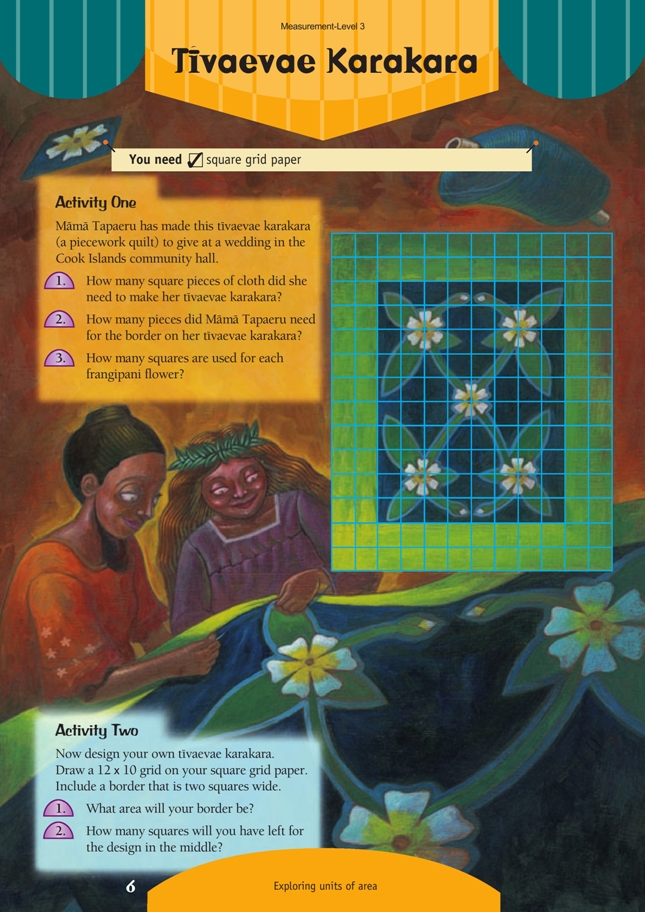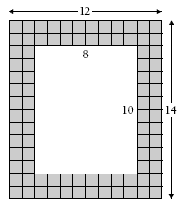This is a level 3 measurement strand activity from the Figure It Out series.
A PDF of the student activity is included.
Click on the image to enlarge it. Click again to close. Download PDF (390 KB)
explore units of area
square grid paper
Activity One
This activity provides some area problems in an interesting context.
Ask students how they solved question 1. If necessary, explain that the quickest solution would be to calculate the length and the width and multiply the two.
Question 2 may present a difficulty for those who mistake this for a perimeter question. It is really asking for the area of the border. Other students may simply count the squares.
Discuss other ways of calculating the area of the border. Some useful hints may be: “Try to use the answer from question 1 to help you” or “Which part of the rectangle is not part of the border? How can you use this to help?” These questions may help students see that problems of this sort can be solved by subtracting the area of the smaller (10 x 8) rectangle from the larger (14 x 12) rectangle.
Question 3 asks the students to estimate the amount of area that the frangipani flower covers on each square. The answer gives the total squares used, but it also indicates that the actual area covered by each flower is half of each of the squares on which it appears.
Activity Two
In this activity, encourage your students to investigate different ways of calculating the answers for questions 1 and 2. This may include subtracting the small (8 x 6) rectangle from the large (12 x 10) rectangle.
You may like to set some conditions for the patterns that students use in their designs, for example, each pattern should have an area of four squares but must be in more than four squares.
Answers to Activity
Activity One
1. 168 pieces
2. 88 pieces
3. 4 squares are used, but each flower covers approximately half of each square.
Activity Two
1. 72 squares
2. 48 squares

